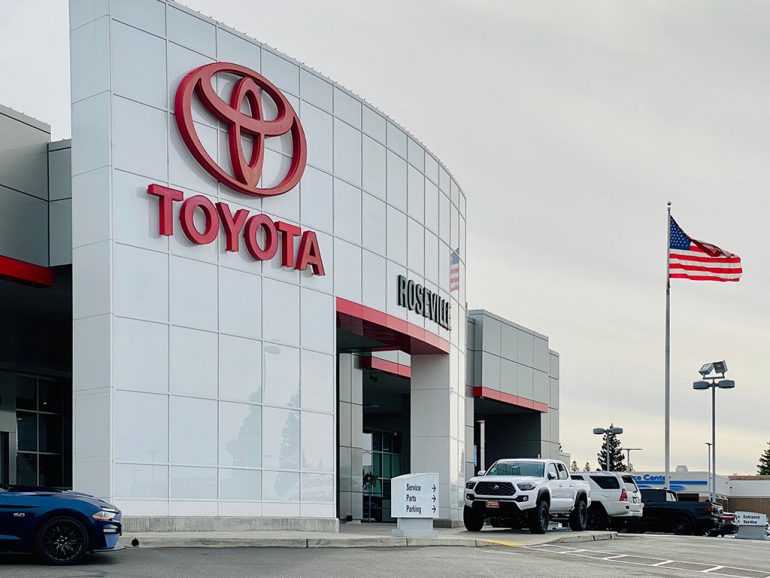
In the third quarter of the year, several major automakers in the United States have seen an increase in their sales figures. Analysts are optimistic about the industry’s performance, projecting a 13-14% rise in U.S. light-vehicle sales for September and an even more robust 15-16% increase for the entire Q3. This growth can be attributed to improvements in retail inventories and a rebound in fleet shipments.
Despite facing supply and logistics challenges, some automakers have managed to maintain strong demand for their light trucks. Honda, for instance, reported increased demand despite facing difficulties with sales of certain models such as the Pilot, Passport, Ridgeline, and Odyssey.
Honda also revealed that its dealer stock has increased, going from 31,900 units at the start of September to approximately 36,800 units at the beginning of October, which is significantly higher than the figure from a year ago.
Hyundai and Kia also had notable gains, with Hyundai’s volume rising by 16% to 68,961 units in the last month, and Kia finishing the month up 20% at 67,264 units. Retail deliveries for both brands showed positive trends as well, indicating strong consumer interest in their offerings.
Hyundai mentioned that its U.S. inventory has seen a notable increase, rising from 53,075 at the end of August to 58,371 at the end of September, a considerable surge compared to the same time in the previous year.
Eric Watson, Vice President of Sales Operations at Kia America, emphasized that as inventory levels recover across all brands, the market is becoming more competitive, providing consumers with a wider range of choices.
However, it’s not all smooth sailing for automakers. Hyundai Motor America CEO Randy Parker acknowledged that September was a challenging month due to higher interest rates, inflation, temporary factory shutdowns, and low stockpiles. He mentioned that the company started the third quarter with low inventory levels due to strong sales in the first half. Despite the challenges, Parker expressed determination to remain competitive in the market.
Nissan Motor Co. also experienced significant growth, with third-quarter sales rising by 41%. The Nissan division saw a 41% increase, and Infiniti posted its fifth consecutive quarterly gain with a 47% increase.
Looking ahead, Stellantis and Volkswagen Group were scheduled to release their third-quarter deliveries later in the week, while Ford Motor Co. was expected to report its September sales. Analysts anticipate that sales will continue to rise in September and the third quarter, with all automakers projected to achieve higher third-quarter volume. This positive trend follows a 17% market increase in the second quarter and a 13% rise in the first half of the year.
The U.S. light-vehicle market has been on a path of recovery, driven by pent-up demand and increased rental and commercial fleet shipments. However, elevated new-vehicle prices and interest rates have kept retail demand in check, posing a challenge to sustained growth.
Despite the ongoing UAW strike, which involves a significant portion of U.S. union members working for automakers, it is not believed to have had a significant impact on sales. The strike has led to production losses, but the industry’s overall performance remains strong.
One notable factor affecting the market is the increasing cost of new vehicles in the U.S., with the average transaction price surpassing $45,000. Rising interest rates, despite a pause by the Federal Reserve, have pushed new-vehicle loan rates to their highest levels in 23 years, making it more challenging for consumers to afford new cars.
Moody’s Analytics has estimated that the typical American household now needs 42 weeks of income to purchase a new light vehicle, a notable increase from 33 weeks just three years ago. This suggests that pricing and interest rates will continue to influence demand in the near future.
Furthermore, data indicates that the U.S. electric vehicle (EV) market is being driven by price cuts from Tesla. Inventories in the U.S. have increased compared to the previous year, with a higher number of cars and light trucks available for consumers. However, retail inventory levels are still below pre-pandemic levels.
As the market continues to shift toward more expensive light trucks, such as pickups and crossovers, the average retail transaction price for new vehicles is expected to reach $45,516 in September, slightly down from the previous year. Incentives and discounting have increased, with the average incentive per new vehicle rising and consumers financing higher-priced vehicles with monthly payments of $1,000 or more becoming more common.
Source: AutoNews (subscription required)

Mike Floyd is a finance executive by trade and a car enthusiast at heart. As a CFO with a keen eye for detail and strategy, Mike brings his analytical mindset to the automotive world, uncovering fresh insights and unique perspectives that go beyond the surface. His passion for cars—especially his favorite, the Porsche 911, fuels his contributions to Automotive Addicts, where he blends a love for performance and design with his professional precision. Whether he’s breaking down industry trends or spotlighting emerging innovations, Mike helps keep the site both sharp and forward-thinking.